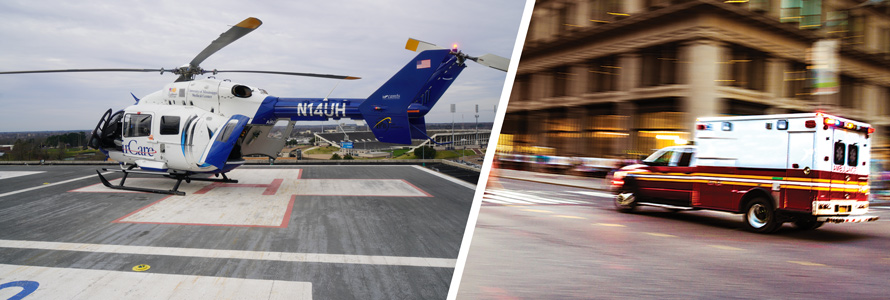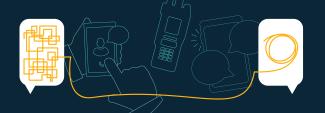The First Responder Network Authority’s (FirstNet Authority) Public Safety Advisory Committee (PSAC) recently formed a Strike Team to examine new applications of telehealth, in response to the charge by Emergency Medical Services (EMS) leaders to provide the “Right Care, at the Right Time, at the Right Place.” Telehealth and, in particular, the Centers for Medicare and Medicaid Services (CMS) Emergency Triage, Treat, and Transport (ET3) program are current discussion topics in EMS forums nationwide.
This year, the CMS Center for Medicare and Medicaid Innovation (CMMI) unveiled the ET3 model for EMS payment. It is a voluntary five-year model pilot program that will, for the first time, provide payment to an EMS service, after a 911 dispatch, for assessment and treatment in place (TIP) on scene without transport to a hospital Emergency Department (ED) being a necessary part of the process. It also allows for EMS payment for transporting a patient under the same circumstances to an alternative destination (AD) rather than a hospital ED. This is important because currently, Medicare regulations only allow payment for EMS ground transportation services when individuals are transported to hospitals, critical access hospitals, skilled nursing facilities, or dialysis centers. Most Medicare patients are thus transported to a hospital, even when a lower acuity destination may more appropriately meet the individual’s needs.
The only nationwide network dedicated to public safety, FirstNet is uniquely situated to facilitate a key component of the ET3 program—providing TIP using a qualified health care practitioner connected through a telehealth link. FirstNet not only meets the minimum criteria, as a dedicated public safety network it also has several features that distinguish it from other standard commercial wireless networks. Key among these differentiators are priority and preemption available to FirstNet subscribers, validated by the FirstNet Authority. This means that the network will always prioritize access by FirstNet subscribers over commercial or other uses in a given area at the same time. Additionally, FirstNet routes all information from public safety subscribers through a dedicated core network, allowing for more security and reliability. FirstNet also provides end-to-end encryption of data being sent through the network, helping to ensure the cybersecurity of medical and patient information.
The FirstNet network was designed with substantial and ongoing input from public safety to ensure that the needs of public safety today and tomorrow are met. FirstNet can be used daily by EMS providers not only for ET3 telehealth purposes, but also for sending video, medical imaging (ultrasound or CT images), and medical vital sign information, such as data from devices like the ubiquitous “12 lead monitor” and a host of other sensors and devices.
I’d like to thank the FirstNet Authority subject matter experts and my fellow PSAC members who participated in this Strike Team. We will continue to offer our expertise on this and other critical topics to ensure the FirstNet network continues to meet the needs of first responders now and into the future.
For more information on the ET3 program, visit CMS website: https://innovation.cms.gov/initiatives/et3/faq.html
To read more about the FirstNet Authority’s Public Safety Advisory Committee, click here and to participate with the FirstNet Authority’s public safety programs for EMS, visit FirstNet.gov.
To learn more about FirstNet products and solutions, visit FirstNet.com.




















